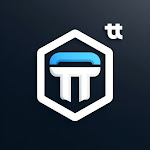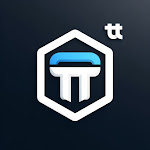Computer Security, techniques developed to safeguard
information and information systems stored on computers. Potential threats
include the destruction of computer hardware and software and the loss,
modification, theft, unauthorized use, observation, or disclosure of computer
data.
Computers and the information they contain are
often considered confidential systems because their use is typically restricted
to a limited number of users. This confidentiality can be compromised in a
variety of ways. For example, computers and computer data can be harmed by
people who spread computer viruses and worms. A computer virus is a set of
computer program instructions that attaches itself to programs in other
computers. The viruses are often parts of documents that are transmitted as
attachments to e-mail messages. A worm is similar to a virus but is a
self-contained program that transports itself from one computer to another
through networks. Thousands of viruses and worms exist and can quickly
contaminate millions of computers.
People who intentionally create viruses are computer
experts often known as hackers. Hackers also violate confidentiality by
observing computer monitor screens and by impersonating authorized users of
computers in order to gain access to the users’ computers. They invade computer
databases to steal the identities of other people by obtaining private,
identifying information about them. Hackers also engage in software piracy and
deface Web sites on the Internet. For example, they may insert malicious or
unwanted messages on a Web site, or alter graphics on the site. They gain
access to Web sites by impersonating Web site managers.
Malicious hackers are increasingly developing powerful
software crime tools such as automatic computer virus generators, Internet
eavesdropping sniffers, password guessers, vulnerability testers, and computer
service saturators. For example, an Internet eavesdropping sniffer intercepts
Internet messages sent to other computers. A password guesser tries millions of
combinations of characters in an effort to guess a computer’s password.
Vulnerability testers look for software weaknesses. These crime tools are also
valuable security tools used for testing the security of computers and networks.
An increasingly common hacker tool that has gained
widespread public attention is the computer service saturator, used in
denial-of-service attacks, which can shut down a selected or targeted computer
on the Internet by bombarding the computer with more requests than it can
handle. This tool first searches for vulnerable computers on the Internet where
it can install its own software program. Once installed, the compromised
computers act like “zombies” sending usage requests to the target computer. If
thousands of computers become infected with the software, then all would be
sending usage requests to the target computer, overwhelming its ability to
handle the requests for service.
A variety of simple techniques can help
prevent computer crimes, such as protecting computer screens from observation,
keeping printed information and computers in locked facilities, backing up
copies of data files and software, and clearing desktops of sensitive
information and materials. Increasingly, however, more sophisticated methods
are needed to prevent computer crimes. These include using encryption
techniques, establishing software usage permissions, mandating passwords, and
installing firewalls and intrusion detection systems. In addition, controls
within application systems and disaster recovery plans are also necessary.
|
II
|
BACKUP
|
Storing backup copies of software and data and having
backup computer and communication capabilities are important basic safeguards
because the data can then be restored if it was altered or destroyed by a
computer crime or accident. Computer data should be backed up frequently and
should be stored nearby in secure locations in case of damage at the primary
site. Transporting sensitive data to storage locations should also be done
securely.
|
III
|
ENCRYPTION
|
Another technique to protect confidential
information is encryption. Computer users can scramble information to prevent
unauthorized users from accessing it. Authorized users can unscramble the
information when needed by using a secret code called a key. Without the key
the scrambled information would be impossible or very difficult to unscramble.
A more complex form of encryption uses two keys, called the public key and the
private key, and a system of double encryption. Each participant possesses a
secret, private key and a public key that is known to potential recipients.
Both keys are used to encrypt, and matching keys are used to decrypt the
message. However, the advantage over the single-key method lies with the
private keys, which are never shared and so cannot be intercepted. The public
key verifies that the sender is the one who transmitted it. The keys are
modified periodically, further hampering unauthorized unscrambling and making
the encrypted information more difficult to decipher.
|
IV
|
APPROVED USERS
|
Another technique to help prevent abuse and misuse
of computer data is to limit the use of computers and data files to approved
persons. Security software can verify the identity of computer users and limit
their privileges to use, view, and alter files. The software also securely
records their actions to establish accountability. Military organizations give
access rights to classified, confidential, secret, or top-secret information
according to the corresponding security clearance level of the user. Other
types of organizations also classify information and specify different degrees
of protection.
|
V
|
PASSWORDS
|
Smart Card
Smart
cards, like this one for an employee of the Microsoft Corporation, are becoming
increasingly common as security devices for accessing computer networks and
corporate buildings. In addition to an identifying photograph, the smart card
contains an embedded microchip on the reverse side that stores data about the
user, including a password that changes periodically. This information is read
by a device attached to a computer and ensures that only authorized persons can
access a corporation's internal computer network.
Passwords are confidential sequences of characters that
allow approved persons to make use of specified computers, software, or
information. To be effective, passwords must be difficult to guess and should
not be found in dictionaries. Effective passwords contain a variety of
characters and symbols that are not part of the alphabet. To thwart imposters,
computer systems usually limit the number of attempts and restrict the time it
takes to enter the correct password.
A more secure method is to require possession
and use of tamper-resistant plastic cards with microprocessor chips, known as
“smart cards,” which contain a stored password that automatically changes after
each use. When a user logs on, the computer reads the card's password, as well
as another password entered by the user, and matches these two respectively to
an identical card password generated by the computer and the user's password
stored in the computer in encrypted form. Use of passwords and 'smart cards' is
beginning to be reinforced by biometrics, identification methods that use
unique personal characteristics, such as fingerprints, retinal patterns, facial
characteristics, or voice recordings.
|
VI
|
FIREWALLS
|
Computers connected to communication networks, such as
the Internet, are particularly vulnerable to electronic attack because so many
people have access to them. These computers can be protected by using firewall
computers or software placed between the networked computers and the network.
The firewall examines, filters, and reports on all information passing through
the network to ensure its appropriateness. These functions help prevent
saturation of input capabilities that otherwise might deny usage to legitimate
users, and they ensure that information received from an outside source is
expected and does not contain computer viruses.
|
VII
|
INTRUSION DETECTION
SYSTEMS
|
Security software called intrusion detection systems may
be used in computers to detect unusual and suspicious activity and, in some
cases, stop a variety of harmful actions by authorized or unauthorized persons.
Abuse and misuse of sensitive system and application programs and data such as
password, inventory, financial, engineering, and personnel files can be
detected by these systems.
|
VIII
|
APPLICATION SAFEGUARDS
|
The most serious threats to the integrity and
authenticity of computer information come from those who have been entrusted
with usage privileges and yet commit computer fraud. For example, authorized
persons may secretly transfer money in financial networks, alter credit
histories, sabotage information, or commit bill payment or payroll fraud.
Modifying, removing, or misrepresenting existing data threatens the integrity
and authenticity of computer information. For example, omitting sections of a
bad credit history so that only the good credit history remains violates the
integrity of the document. Entering false data to complete a fraudulent
transfer or withdrawal of money violates the authenticity of banking
information. These crimes can be prevented by using a variety of techniques.
One such technique is checksumming. Checksumming sums the numerically
coded word contents of a file before and after it is used. If the sums are
different, then the file has been altered. Other techniques include
authenticating the sources of messages, confirming transactions with those who
initiate them, segregating and limiting job assignments to make it necessary
for more than one person to be involved in committing a crime, and limiting the
amount of money that can be transferred through a computer.
|
IX
|
DISASTER RECOVERY
PLANS
|







Je suis dans l'attente de votre réponse!
ReplyDeleteAlso visit my web-site www.easyjoomla.org